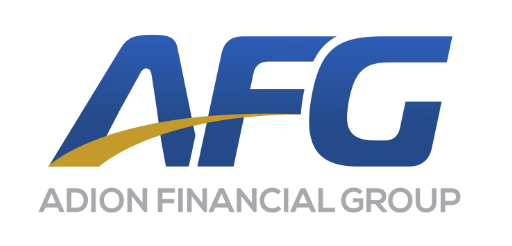Connecticut Clean Driving Record NEMT Fleets Insurance

or call us: (888) 585-5188

Top 3 Recommended Policies
Operating a Non-Emergency Medical Transportation (NEMT) fleet in Connecticut comes with unique challenges, especially when it comes to managing insurance costs. With premiums ranging widely and the state’s recent focus on driver safety, understanding how a clean driving record impacts NEMT insurance is crucial for fleet operators. This comprehensive guide explores everything you need to know about insurance for Connecticut’s NEMT fleets, emphasizing the role of clean driving records, safety training, and compliance in controlling costs and enhancing safety.
The Landscape of NEMT Auto Insurance in Connecticut
NEMT auto insurance is notably expensive compared to standard commercial vehicle insurance. Premiums for NEMT vehicles in Connecticut can range from $4,200 to as high as $18,000 annually per vehicle, with a median cost around $12,000 when carrying liability limits of $1,000,000. This wide range reflects the high-risk nature of NEMT operations, which involve transporting vulnerable passengers and navigating complex urban and rural routes. The unique challenges faced by NEMT providers, such as accommodating passengers with mobility issues and adhering to strict regulatory compliance, further contribute to these elevated costs.
Insurance providers assess risk based on various factors, including driver records, vehicle types, and fleet safety practices. For NEMT fleets, maintaining a clean driving record across all drivers can be a significant factor in securing more affordable insurance rates. According to industry data on NEMT insurance costs, fleets that demonstrate lower risk through driver history and safety protocols often negotiate better premiums. Additionally, the implementation of advanced safety technologies, such as GPS tracking and onboard cameras, can further enhance a fleet's safety profile, potentially leading to reduced insurance costs and improved operational efficiency.
Given the high stakes of insurance expenses, fleet managers must prioritize strategies that reduce risk and demonstrate responsibility to insurers. Regular training programs for drivers focusing on defensive driving techniques and customer service can not only enhance safety but also improve the overall experience for passengers. Furthermore, establishing a robust maintenance schedule for vehicles ensures that all NEMT vehicles are in optimal condition, which can help mitigate the risk of accidents and breakdowns. By fostering a culture of safety and accountability, NEMT providers can better position themselves in the competitive insurance landscape, ultimately leading to more sustainable operational practices.

Why a Clean Driving Record Matters for NEMT Fleets
Insurance companies use proprietary underwriting criteria to evaluate risk, and a clean driving record is one of the most influential factors. Mark Friedlander of the Insurance Information Institute highlights that drivers with clean records receive better rates than those with infractions such as speeding tickets or accidents. This principle applies directly to NEMT fleets, where every driver’s record contributes to the overall risk profile of the company.
For fleets, this means that investing in driver screening and ongoing training to maintain clean records can lead to substantial savings. High-risk drivers, by contrast, face significantly higher premiums. In Connecticut, high-risk drivers pay an average of $3,269 annually for personal car insurance, which is considerably higher than the average for drivers with clean records. While NEMT insurance premiums are generally higher, the same risk principles apply.
Focusing on clean driving records not only reduces premiums but also enhances passenger safety and fleet reputation, which are critical in the healthcare transportation sector. Moreover, a clean driving record can serve as a powerful marketing tool. NEMT fleets that promote their commitment to safety and reliability can attract more clients, particularly those who are vulnerable or have specific healthcare needs. Families and caregivers are more likely to choose a service that prioritizes the well-being of its passengers, knowing that the drivers are not only skilled but also responsible.
Additionally, maintaining a clean driving record can foster a culture of accountability and professionalism within the fleet. Regular training sessions and assessments can keep drivers informed about safe driving practices and the latest regulations. This proactive approach not only minimizes the risk of accidents but also empowers drivers to take pride in their work, knowing they are part of a team that values safety above all else. Such a culture can lead to lower turnover rates and increased job satisfaction, further solidifying the fleet's reputation in the community.
Connecticut’s Recent Push for Driver Safety and Its Impact on NEMT Fleets
In response to a troubling increase in traffic fatalities—over 300 deaths in 2024—Connecticut took proactive steps to improve driver safety. In February 2025, nearly 7,200 state employees participated in a mandatory four-hour driving class aimed at reducing accidents and reinforcing safe driving habits. This initiative reflects the state’s commitment to road safety, which directly affects all commercial drivers, including those in the NEMT industry.
For NEMT fleet operators, this development underscores the importance of continuous driver education and compliance with safety standards. Aligning fleet policies with state safety initiatives can improve driver performance and reduce the risk of costly accidents and insurance claims. Furthermore, the implementation of advanced driver-assistance systems (ADAS) in vehicles can complement these educational efforts, providing real-time feedback to drivers and helping them make safer decisions on the road.
Connecticut’s focus on driver safety also means insurers are likely to reward fleets that demonstrate proactive safety measures with better insurance terms. Staying ahead of regulatory trends and participating in state-endorsed training programs can be a strategic advantage. Additionally, the integration of telematics systems within NEMT fleets can enhance safety by monitoring driver behavior and vehicle performance, allowing fleet managers to identify areas for improvement and implement targeted training.
Moreover, the state’s emphasis on safety extends beyond just training and insurance benefits; it fosters a culture of accountability and responsibility among drivers. As more NEMT operators adopt these safety measures, they not only contribute to reducing overall traffic fatalities but also enhance their reputation within the community. Families relying on NEMT services can feel more secure knowing that their drivers are well-trained and committed to safety. This trust is invaluable in an industry where the well-being of passengers, particularly those with medical needs, is paramount.
Learn more about the
Connecticut state driving assessment program and its implications for commercial drivers.
How Safety Training Programs Reduce Insurance Claims and Costs
Safety training is a cornerstone of effective risk management for NEMT fleets. Studies show that implementing comprehensive safety programs focused on defensive driving, passenger assistance, and CPR can significantly reduce the frequency and severity of insurance claims. These programs not only improve driver skills but also foster a culture of safety that permeates the entire fleet operation.
By addressing critical risks head-on, fleets can demonstrate to insurers their commitment to minimizing accidents and protecting passengers. This proactive approach often translates into lower insurance premiums and fewer disruptions from claims processing.
Effective safety training programs typically include scenario-based learning, regular refresher courses, and performance monitoring. These elements help maintain high standards and adapt to evolving road conditions and regulations. Additionally, incorporating technology such as telematics can enhance training by providing real-time data on driver behavior, allowing for targeted coaching and improvement.
Moreover, the benefits of safety training extend beyond just insurance claims. A well-trained workforce is more confident and competent, which can lead to improved job satisfaction and retention rates among drivers. When employees feel equipped to handle their responsibilities safely, they are more likely to take pride in their work and contribute positively to the overall reputation of the fleet. This not only enhances customer trust but can also lead to increased business through referrals and repeat clients.
For a detailed look at the impact of safety training on NEMT claims, visit
this study on NEMT safety training.

Fleet Safety Compliance: Avoiding Fines and Enhancing Insurance Profiles
Compliance with fleet safety regulations is not only a legal obligation but also a financial imperative. Non-compliance can result in fines ranging from $100 to $50,000, with severe violations potentially costing up to $16,864. These penalties can quickly erode profitability and damage a fleet’s reputation. Moreover, the impact of these fines can extend beyond immediate financial loss; they can also lead to increased scrutiny from regulatory bodies, which may result in more frequent inspections and audits, further straining resources and diverting attention from core business operations.
Beyond fines, non-compliance signals higher risk to insurers, often leading to increased premiums or even denial of coverage. Maintaining rigorous safety standards, conducting regular vehicle inspections, and ensuring all drivers meet licensing and training requirements are essential steps for any NEMT operator. Additionally, investing in driver training programs can significantly enhance safety performance. These programs not only equip drivers with the necessary skills to navigate challenging situations but also foster a culture of safety within the organization, which can be a strong selling point when negotiating insurance terms.
Fleets that consistently meet or exceed compliance standards position themselves as lower-risk clients, which can result in more favorable insurance terms and improved operational stability. This proactive approach to safety can also lead to enhanced customer trust and loyalty, as clients are increasingly aware of the importance of safety in transportation services. Furthermore, a strong safety record can be leveraged in marketing efforts, showcasing the fleet's commitment to excellence and reliability, thus attracting more business opportunities.
Explore a comprehensive
checklist for fleet safety compliance in NEMT to ensure your operation stays on track. By adhering to best practices and staying informed about regulatory changes, fleet operators can not only avoid penalties but also create a sustainable business model that prioritizes safety and efficiency.
Age, Experience, and Their Influence on Insurance Rates
Age and driving experience also play a significant role in insurance underwriting. According to Mark Friedlander, adults aged 50 to 70 with clean driving records typically pay the lowest insurance rates, as this group is considered the lowest risk by insurers. For NEMT fleets, employing experienced drivers within this age range can be a strategic move to reduce insurance costs. This demographic not only brings a wealth of driving experience but also tends to have a more cautious approach to driving, which can further mitigate risks associated with accidents and claims.
However, it’s important to balance experience with ongoing safety training to maintain sharp driving skills and awareness. Insurance companies look favorably on fleets that combine seasoned drivers with continuous education and safety initiatives. Regular training sessions can cover topics such as defensive driving techniques, updates on traffic laws, and the latest safety technologies. This proactive approach not only enhances the skills of the drivers but also demonstrates to insurers that the fleet is committed to maintaining high safety standards, potentially leading to lower premiums.
By understanding these demographic factors, fleet managers can make informed hiring decisions that align with both safety goals and financial efficiency. Moreover, it’s beneficial to analyze the specific needs of the fleet's operations; for instance, drivers with experience in handling specialized vehicles or those trained in first aid can add extra layers of safety and reliability. Additionally, leveraging data analytics to assess driving patterns and performance can provide insights into how age and experience directly correlate with incident rates, allowing for more tailored insurance strategies.
Practical Tips for Maintaining a Clean Driving Record in NEMT Fleets
Maintaining a clean driving record across an entire NEMT fleet requires a multifaceted approach:
- Regular Training: Implement ongoing driver education programs focusing on defensive driving, passenger care, and emergency response.
- Driver Screening: Conduct thorough background checks and monitor driving records before hiring and throughout employment.
- Incentive Programs: Reward safe driving behaviors to motivate drivers to maintain clean records.
- Technology Use: Utilize telematics and GPS tracking to monitor driving habits and identify risky behaviors early.
- Compliance Audits: Perform regular audits to ensure adherence to safety standards and regulatory requirements.
These strategies not only help keep insurance premiums manageable but also improve overall service quality and passenger safety. Additionally, fostering a culture of safety within the organization can significantly enhance the effectiveness of these measures. Encouraging open communication among drivers about safety concerns and experiences can lead to shared learning and improved practices across the fleet. Regular safety meetings can also serve as a platform for discussing recent incidents, reviewing safety policies, and reinforcing the importance of maintaining a clean driving record.
Moreover, engaging with drivers in discussions about the impact of their driving on passenger comfort and safety can create a sense of ownership and responsibility. When drivers understand that their actions directly affect the well-being of their passengers, they are more likely to adopt safer driving habits. Implementing a feedback loop, where drivers can report their observations and suggest improvements, can further enhance this culture of safety and accountability, ultimately leading to a more reliable and efficient NEMT service.
Conclusion: The Road Ahead for Connecticut NEMT Fleets
Insurance costs remain one of the most significant expenses for NEMT fleets in Connecticut, but a clean driving record combined with robust safety training and compliance can make a substantial difference. By understanding the factors that influence premiums and actively managing risk, fleet operators can protect their bottom line while providing safe, reliable transportation for their clients.
Connecticut’s recent emphasis on driver safety and the availability of targeted training programs offer valuable opportunities for fleets to improve their insurance profiles. Staying informed and proactive is key to navigating the complex insurance landscape and ensuring long-term success in the NEMT industry.
For further insights into managing high-risk driver insurance and fleet safety, consider exploring resources like
Insurance Information Institute expert insights.
Contact Us
Phone
Locations
Connecticut Location
703 Hebron Ave., 3rd Floor, Glastonbury, CT 06033
North Carolina Location
436 East 36th St., Charlotte, NC 28205

